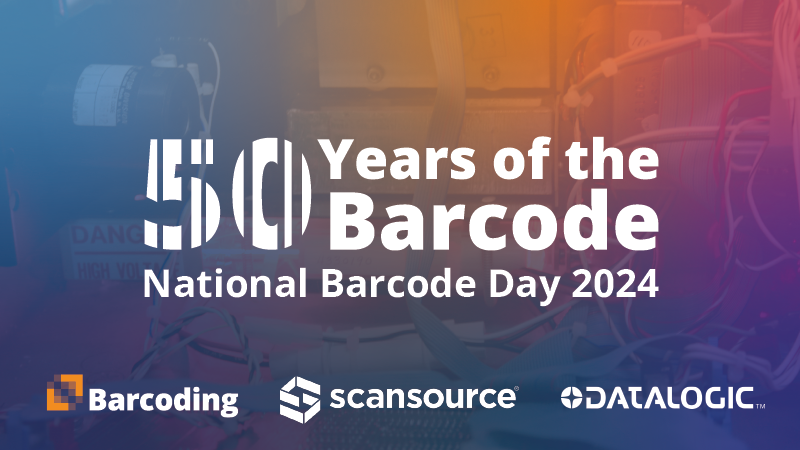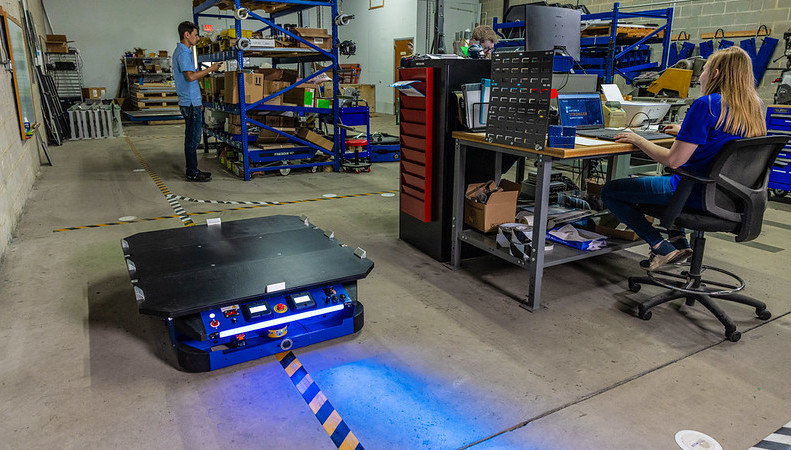Thanks to everyone who attended our 4th Barcoding Huddle! We had a very informative discussion around a very hot topic: modernizing your supply chain using a cloud model for mobility. Those who attended heard from Barcoding’s team and from Ivanti Wavelink, a company relied upon by thousands of companies to accelerate application delivery, reduce device management and support costs, and tighten network security.
If you weren’t able to attend the event or just want to check out a recap of what we covered, keep reading for some highlights and a chance to watch the recording.
FEATURED SPEAKERS
Joining our very own Jody Costa, VP of Marketing & Strategic Partnerships, were:
- Sam Gonzales, Director of Global Systems & Solutions for Ivanti Wavelink
- Peter Allenspach, VP of Supply Chain Sales for Ivanti Wavelink
- Keri Corbin, Vice President of Client Solutions at Barcoding
THE TOPIC: Modernizing Your Supply Chain With A Cloud Mobility Model
In part because today’s mobile handhelds are capable of so much and can have a significant impact on a business’s ability to compete and grow, companies considering moving from Windows to Android are interested in several related topics, including developing the right migration strategy, ensuring security, and understanding the steps involved.
The Windows-to-Android Migration
The technology in our industry has changed tremendously in the last several years. Microsoft left the mobile space, deciding to discontinue their support of Windows CE II and Windows mobile platforms—thus sparking the industry’s move to Android.
Moving from a Windows mobile environment to an Android operating system can be overwhelming to some organizations, but there’s no doubt that Android is a great platform—it’s open-source, it's available for manufacturers, and it’s robust enough to fit most any need.
Despite this, some concerns linger, especially as it relates to security. Google, the developer of Android, takes security very seriously (and they’re very good at it, too)—one reason they encourage frequent updates to its devices. This means, of course, that organizations moving from Windows to Android aren’t just dealing with the switch itself, but must also get used to the idea of refreshing their devices regularly in order to maintain optimum security.
A New Mindset
Users new to Android must develop a mindset that’s forward-looking—one that anticipates what’s next and that keeps up with the associated changes that will be required. When it comes to mobility, this is a different way of thinking and behaving for most organizations, and it requires planning.
Typically a migration to Android (and a cloud migration strategy) starts with a conversation involving all mobility stakeholders. This is critical to the broader understanding of what the mobile program should solve for and should include the people who will be using the devices, as they’ll have valuable insight into what’s working, what’s not, what’s missing, what processes aren’t as efficient as possible, and more. The next step is often taking inventory of current assets. If some of the organization’s devices are already on Android, a migration plan is needed to take them to the next version; the older Windows devices will have to be replaced.
The Cloud
Moving to Android and the cloud requires smart planning, a smart cloud migration strategy—and a smart MDM partner.
Barcoding approaches a migration to Android and cloud knowing that expert project management (and change management) is essential for the smooth transition. We like to say, “It’s not just about hardware anymore,” and the best approach factors in processes, people, and technology. It’s important to think about the existing (and needed) processes, the experience a user has with the device and software, and to understand and fully leverage the power of the device, the applications, and the cloud.
Security
Android devices are highly sophisticated and can perform multiple data-related functions, making security critically important. Depending on the use case, this might mean locking down the device so it can only get into the applications that the user is entitled to. There are, in fact, several ways to ensure that the device isn’t being used for purposes for which they aren’t intended.
Android operating systems have tighter guidelines and more specific ways that they must be managed. Android Enterprise is a set of tools that Google provides for any mobile device management software providers such as Ivanti and others to be able to configure and manage devices. It’s a cloud-based solution that requires the devices and the management software be able to talk to Google servers—something that some organizations fear.
However, this communication can be done securely. There is a misconception that you have to “fling the doors wide open and allow everything into your network.” The truth is that you only need to make only a very small window available to the specific servers you need to talk to. Google (and any good mobile device management provider) is going to have very secure communication channels and the right measures in place to ensure that your device knows it's talking to the right server, and that all communications happen securely.
Business Benefits
The cloud offers enormous benefits to organizations of all sizes, especially when you consider our hyper-competitive world and the speed at which companies must deliver product. Cloud allows you to optimize efficiency—something that will help you maintain a competitive edge.
In fact, many organizations wonder how they can accelerate the process of moving to Android in order to more quickly realize the benefits. One of the things Barcoding does to help organizations move at the right pace for them is offer lifecycle management service. We assess your current environment and help identify the devices you’ll need and the right order for deploying them, then work to get applications migrated.
Our Huddle ended with a reminder for attendees: don’t let the effort involved to get there discourage you from moving to Android and the cloud. Once you do, you're going to start reaping continual benefits—technology moves really fast, and moving to the cloud gets you onto a platform that can keep up with it.
Thank You!
Remember: you're not in this alone. The key to running a successful business is to surround yourself with people who are really good at what they do, and the folks at Barcoding and Ivanti Wavelink are here for you as you consider migration to Android and the cloud.
Thanks again to everyone who was a part of this Huddle. Stay tuned for information about future Huddles and other #SupplyChainGeek events! Until then, watch the recording below.
And, if you’re ready to talk, click the link below to get connected to a Barcoding expert!
Schedule a Consultation!

.jpg)



